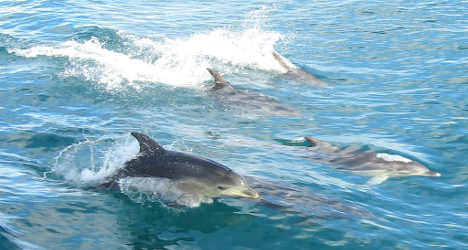Police began an investigation into the popular Lazio restaurant in December after a journalist from Silvio Berlusconi's Italia Uno channel secretly filmed a meal in which he was served dolphin meat, La Stampa reported.
Customers in the know reportedly ordered the dish using a code-name.
Packages of the meat have now been seized after subsequent police checks found it was indeed from dolphins, which are a protected species under EU law.
Animal rights groups Marevivo and LAV have now appealed to Andrea Orlanda, Italy's environment minister, to impose stricter controls across the "whole supply chain", from fishermen to restaurants.
Hunting, selling and eating dolphins is illegal in Italy, while EU law requires member states to adopt “a regime of rigorous protection” of dolphins.
Fishermen who accidentally catch a dolphin in their nets are required to bring the carcass to the coast guard, but many are allegedly circumventing the rules by cutting off the fins, heads and other identifiable parts of the dolphins in order to pass them off as other fish.
"It is urgent that a zero-tolerance attitude is taken towards this illegal and disgusting meat trade," a joint statement from Marevivo and LAV said.
Don't miss a story about Italy – Join us on Facebook and Twitter.




 Please whitelist us to continue reading.
Please whitelist us to continue reading.
Member comments